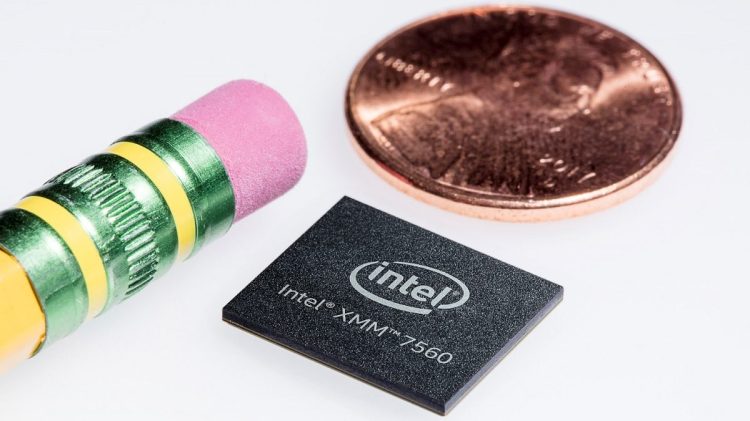Wall Street Journal headline aside, Apple’s interest in acquiring Intel’s 5G modem business is not really news at this point. The possibility of a deal was widely reported immediately after Intel withdrew from developing 5G modems and was all but confirmed when Intel paused its modem auction to pursue an exclusive deal with one unnamed bidder. At this stage, the interesting part isn’t that the Apple-Intel negotiations are presumed to be at an “advanced” stage, or that the deal value will apparently be in the $1 billion range, but rather the likely reason for such a purchase.
Intel’s April exit from the 5G smartphone modem business happened for one of two reasons: Either it couldn’t produce the 5G modem it promised Apple on time, or Apple — its only major remaining 5G smartphone customer — felt pressured to settle a lawsuit with Qualcomm. At the time, industry scuttlebutt focused on the former possibility, namely that Intel was reportedly incapable of producing a viable 5G modem in time for a 2020 device launch. Apple saw the writing on the wall, made a deal with Qualcomm, and Intel gave up.
One key question: Why would Apple want to buy a business unit it couldn’t rely on to source 5G chips? The answer is that Apple’s interest isn’t as much in the flagging business, which Intel acquired from Infineon years ago, but rather in Intel’s 5G-related patent portfolio — a collection of inventions that underlie not only its own 5G work, but also products made by other companies in the space. Note that Intel’s auction was focused largely on 8,500 patents, mostly cellular, rather than on its wireless development teams.
The basic concept behind a patent is this: If you invent something and are first to register it with the government, you “own” the invention and can sue anyone who makes something using the patent without your permission — and, typically, a licensing fee. Big companies now patent or otherwise protect virtually everything they come up with (including implausible concepts), enabling them to chase copycats and, critically, defend against others who accuse them of copying. That’s known as building a defensive patent portfolio.
June 5th: The AI Audit in NYC
Join us next week in NYC to engage with top executive leaders, delving into strategies for auditing AI models to ensure fairness, optimal performance, and ethical compliance across diverse organizations. Secure your attendance for this exclusive invite-only event.
A defensive patent portfolio is like an insurance policy. It can prevent a company from getting sued in the first place, or — via countersuit — limit the amount the company is ultimately responsible for paying if a lawsuit is successful.
Why is this necessary? In short, people and companies have patented so many inventions, in some cases so broadly, that virtually any consumer product can be targeted with a patent lawsuit, reasonably or not. Under the worst circumstances, a successful lawsuit can abruptly halt sales of a popular product or cut into profits. So Apple can’t simply say it wants to start making 5G chips and just copy whatever other companies in the space have done; it needs to protect itself against lawsuits and marshall an ability to countersue if necessary.
Buying Intel’s 5G patent portfolio might keep Apple from being sued by Huawei over alleged 5G patent violations, as Huawei — a key 5G R&D powerhouse, with a reported 15% of the world’s 5G patents — might look at Intel’s (smaller) collection of patents and realize that it could be sued in response. The alternative, as Verizon recently discovered, is to face an over $1 billion lawsuit from Huawei out of nowhere. And there are plenty of companies smaller and hungrier for patent licensing fees than Huawei.
The alternative for companies such as Apple is to sign (and pay for) patent licensing deals with every conceivable 5G inventor. Unfortunately, that’s just not practical. There’s always going to be someone out there with a billion-dollar demand on some obscure 1999-vintage wireless patent, looking for a nice payout from one of the world’s biggest smartphone makers.
So if a 5G-related deal comes together between Apple and Intel, don’t be surprised if it’s not so much about buying an Intel 5G chip or modem development team as about the underlying patented inventions. While it’s entirely possible that Apple could acquire both talent and intellectual property in the deal, much of the value is likely to be intangible — protection against future challenges to products that haven’t yet been built, rather than ones that are ready to ship anytime soon. In any case, Apple has its own team working on modems, and only time will tell whether it’s capable of delivering them more reliably than Intel.

